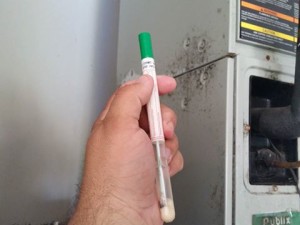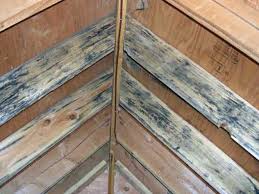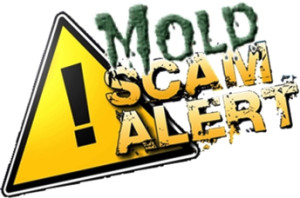Common Mold in Your Florida Home
Common mold in your Florida home
What you and your realtor should know about mold and mold testing
A few home inspector associations and their laboratories are pushing home inspectors to sell mold sampling and mold warranties to homebuyers. As if the internet based, mold testing scammers were not enough, these companies have decided their path to riches lies in convincing the homebuyer of the need to sample common molds. They cite twisted statistics, raise unfounded health alarms and proclaim “peace of mind” to unknowing homebuyers. Some even offer a warranty against future mold if you order their sampling program. Many of these home inspectors do not have enough knowledge of fungi to recognize this service is mostly a scam. They have no real training or knowledge of mycology, microbiology or sampling for mold/fungi. They are basically pawns who have been convinced they are capable of offering a valuable service to their customer while increasing their revenue stream. Unfortunately, they also know that Florida law prohibits them from offering mold assessment unless they hold a Mold Assessor license yet they have been convinced they are exempt based upon a technicality in the statute (10 square foot rule). What you should know is Florida does not want a home inspector to sample for mold – that is why Florida has a distinct license for anyone engaged in mold assessment. To better help you understand mold, let’s look at a few typical scenarios: The home ins pector found mold on the exterior of the air handler. He advises you to sample it to identify the type of mold so, “you would know what it is.” First off, mold does not “grow” on metal surfaces; there is no food source. Secondly, the “mold” is actually attached to common dust which settled on the moist surface due to condensation. It cannot colonize and produce spores so there is absolutely no health threat to “mold” found on a metal surface! You don’t have a mold problem – you need to have the AC checked. There is no need to know what type of common mold this is – wipe it off.
pector found mold on the exterior of the air handler. He advises you to sample it to identify the type of mold so, “you would know what it is.” First off, mold does not “grow” on metal surfaces; there is no food source. Secondly, the “mold” is actually attached to common dust which settled on the moist surface due to condensation. It cannot colonize and produce spores so there is absolutely no health threat to “mold” found on a metal surface! You don’t have a mold problem – you need to have the AC checked. There is no need to know what type of common mold this is – wipe it off.
 The home inspector reports, “possible mold on the ceiling at the AC register. I recommend a lift sample and air testing. ” All AC ducts will have some level of common mold present. Spores will settle on the dust found in any moist duct system. Again, this scenario does not constitute a mold assessment but rather an evaluation of the AC system. An experienced mold assessor may recommend some duct cleaning or microbial spray treatment (spray Lysol works wonders).
The home inspector reports, “possible mold on the ceiling at the AC register. I recommend a lift sample and air testing. ” All AC ducts will have some level of common mold present. Spores will settle on the dust found in any moist duct system. Again, this scenario does not constitute a mold assessment but rather an evaluation of the AC system. An experienced mold assessor may recommend some duct cleaning or microbial spray treatment (spray Lysol works wonders).
 Mold found on attic trusses/roof sheathing. At least one of two things is happening here: insufficient attic ventilation or moisture intrusion from a faulty roof covering. In this picture, mold is a concern but sampling is not needed. There is visible mold present but there is no sign of hyphenation or colonization – this mold is a symptom of an underlying problem. Remove/repair the problem and this mold will most likely die due to a lack of moisture. It should be monitored, or even treated with a microbial spray, but there is no reason to sample it at this point.
Proper mold assessment requires the use of Sampling Data Quality Objectives – in other words, the Assessor should base the sampling plan on a hypothesis which the sampling plan should either support or refute. Every single recognized authority on mold and indoor air quality asserts that, “sampling is the least important aspect of mold assessment.” In the world of true indoor air quality professionals, sampling is generally related to baseline measurements to compare to remediation goals. In the absence of goals, sampling is generally unnecessary and the data is irrelevant.
Mold found on attic trusses/roof sheathing. At least one of two things is happening here: insufficient attic ventilation or moisture intrusion from a faulty roof covering. In this picture, mold is a concern but sampling is not needed. There is visible mold present but there is no sign of hyphenation or colonization – this mold is a symptom of an underlying problem. Remove/repair the problem and this mold will most likely die due to a lack of moisture. It should be monitored, or even treated with a microbial spray, but there is no reason to sample it at this point.
Proper mold assessment requires the use of Sampling Data Quality Objectives – in other words, the Assessor should base the sampling plan on a hypothesis which the sampling plan should either support or refute. Every single recognized authority on mold and indoor air quality asserts that, “sampling is the least important aspect of mold assessment.” In the world of true indoor air quality professionals, sampling is generally related to baseline measurements to compare to remediation goals. In the absence of goals, sampling is generally unnecessary and the data is irrelevant.
If you believe you have mold or an indoor air quality issue,
please contact us. We’ll be happy to speak with you.
William Chandler, MRSA and CIEC
Licensed Mold Assessor, MRSA2209
Board Certified Indoor Environmental Consultant

